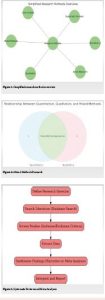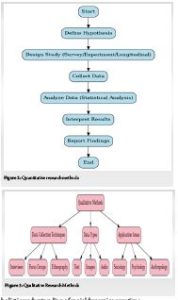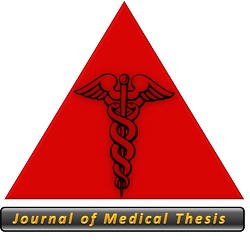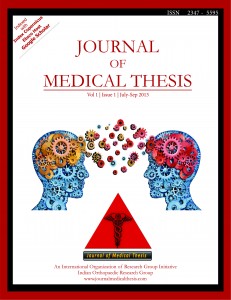Tag Archives: Comprehensive Guide
Exploring Different Methods of Study in Research: A Comprehensive Guide
Vol 10 | Issue 2 | July-December 2024 | page: 03-06 | Sachin Kale, Arvind Vatkar, Ashok Shyam, Nikhil Hiwrale, Ojasv Gehlot, Abhishek Agarwal
https://doi.org/10.13107/jmt.2024.v10.i02.223
Author: Sachin Kale [1], Arvind Vatkar [2], Ashok Shyam [3], Nikhil Hiwrale [1], Ojasv Gehlot [1], Abhishek Agarwal [1]
[1] Department of Orthopaedics, D Y Patil Hospital, Navi Mumbai, Maharashtra, India.
[2] Department of Orthopaedics, MGM Medical College, Navi Mumbai, Maharashtra, India.
[3] Department of Orthopaedics, Sancheti Institute for Orthopaedics and Rehabilitation, Pune, Maharashtra, India.
Address of Correspondence
Dr. Sachin Kale
Department of Orthopaedics, D Y Patil Hospital, Navi Mumbai, Maharashtra, India.
E-mail: sachinkale@gmail.com
Editorial
Research forms the backbone of academic inquiry and innovation, offering pathways to discover, understand, and solve complex problems. Central to this endeavor is the selection of a suitable method of study, a decision that profoundly influences the reliability, validity, and impact of findings. In this editorial, we delve into the primary methods of research, exploring their characteristics, applications, and considerations in minute detail.

________________________________________
1. Quantitative Research Methods
Quantitative research emphasizes numerical data and statistical analysis. It is ideal for studies aiming to quantify relationships, test hypotheses, or derive generalizable patterns. Common quantitative approaches include:
• Surveys: Structured tools designed to collect data from large populations efficiently. These can be administered through various mediums such as online platforms, telephone interviews, or face-to-face interactions. Surveys excel in capturing trends, opinions, and behaviors but require careful design to avoid bias and ensure reliability.
• Experiments: Controlled investigations that manipulate variables to establish cause-and-effect relationships. These studies often utilize control and experimental groups, ensuring valid comparisons. Rigorous design, including randomization and blinding, enhances the reliability of results.
• Longitudinal Studies: Observational research conducted over extended periods to analyze changes and trends. For example, tracking health outcomes in a cohort over decades provides insights into disease progression and risk factors.
Quantitative methods are particularly powerful in disciplines such as economics, epidemiology, and education, where robust, objective data is paramount. However, their reliance on structured data collection instruments requires meticulous planning to ensure accuracy and relevance.
________________________________________
2. Qualitative Research Methods
Qualitative research focuses on understanding phenomena through non-numerical data such as words, images, or behaviors. It seeks to uncover deep insights into motivations, perceptions, and social dynamics. Prominent qualitative techniques include:
• Interviews: In-depth discussions with participants, ranging from structured formats to free-flowing conversations. These allow researchers to probe personal experiences, capturing rich, detailed narratives.
• Focus Groups: Interactive group discussions that explore collective opinions or behaviors. The dynamic nature of focus groups facilitates the emergence of diverse perspectives.
• Ethnography: Immersive studies that observe cultural or social practices within their natural context. Ethnographers often integrate themselves into communities, enabling a holistic understanding of social dynamics over time.
This method excels in fields like sociology, anthropology, and psychology, where exploring human experiences and cultural phenomena is vital. While qualitative research offers depth and nuance, it demands careful consideration of researcher bias and interpretation.
________________________________________
3. Mixed-Methods Research
Mixed-methods research combines the strengths of quantitative and qualitative approaches, enabling a more comprehensive understanding of research questions. Approaches include:
• Sequential Design: Conducting one type of research (e.g., quantitative) followed by the other (e.g., qualitative) to enrich findings.
• Concurrent Design: Simultaneously collecting quantitative and qualitative data to provide complementary insights.
• Embedded Design: Emphasizing one approach while using the other as a supplementary tool.
For example, a study on educational outcomes might use surveys to gather broad trends and follow up with interviews to explore underlying factors in detail. Mixed methods are invaluable in interdisciplinary research, addressing complex questions that require diverse perspectives.
 ________________________________________
________________________________________
4. Systematic Reviews and Meta-Analyses
These methods synthesize existing research, offering comprehensive insights:
• Systematic Reviews: Rigorous evaluations of all relevant studies on a specific topic. Researchers follow strict inclusion criteria to ensure unbiased and thorough analysis.
• Meta-Analyses: Statistical techniques that aggregate data from multiple studies to identify overarching trends. This method increases statistical power and clarifies conflicting findings across individual studies.
These approaches are pivotal in evidence-based disciplines like medicine, where decisions often rely on the aggregation of high-quality evidence. By identifying gaps and inconsistencies in existing research, they also guide future investigations.
________________________________________
5. Case Studies
Case studies offer an in-depth exploration of a single entity, event, or phenomenon. This method provides a detailed understanding of unique or complex cases, such as a groundbreaking technological innovation or a rare medical condition.
Researchers often combine various data collection techniques—interviews, observations, and archival analysis—to construct comprehensive narratives. While case studies yield rich insights, their findings are typically specific and may not be generalizable.
In fields like business, law, and clinical psychology, case studies serve as practical exemplars, providing valuable lessons and strategies for application.
________________________________________
6. Action Research
Action research integrates inquiry and practical application, emphasizing iterative cycles of reflection and improvement. It is particularly suited to professional environments, such as education and organizational management. The process involves:
1. Identifying a Problem: Collaborating with stakeholders to pinpoint an issue.
2. Planning an Intervention: Designing a strategy to address the problem.
3. Implementing the Plan: Acting on the strategy while monitoring its impact.
4. Reflecting and Revising: Analyzing results and refining approaches for future iterations.
Action research empowers participants, fostering collaboration and ensuring the research directly addresses real-world challenges. Its iterative nature facilitates continuous learning and improvement.
________________________________________
7. Observational Studies
Observational research involves studying subjects in their natural environments without manipulation. Key types include:
• Cross-Sectional Studies: Observations at a single point in time to identify patterns or correlations.
• Cohort Studies: Longitudinal studies tracking specific groups with shared characteristics. These are widely used in epidemiology to study disease progression or risk factors.
Observational studies are invaluable for generating hypotheses and understanding real-world behaviors. However, they require careful design to mitigate biases, as the lack of experimental control can complicate causal inferences.
________________________________________
Choosing the Right Method
Selecting an appropriate research method is a strategic decision influenced by:
• Research Goals: For hypothesis testing, quantitative methods may be optimal; for exploring complex behaviors, qualitative approaches may be preferable.
• Resources: Time, funding, and access to participants often dictate feasible methods.
• Ethical Considerations: Ensuring informed consent, confidentiality, and minimizing harm are paramount.
Scholars must also consider the balance between depth and breadth, often weighing the trade-offs of detailed exploration versus broad generalization.
________________________________________
Conclusion
The diversity of research methods reflects the complexity of the questions scholars aim to address. Each approach—from the precision of quantitative studies to the depth of qualitative insights—offers unique advantages and challenges. By carefully aligning their research questions, resources, and ethical considerations with their chosen method, researchers can generate findings that are not only robust but also transformative. Thoughtful selection and execution of research methods ultimately drive academic and societal progress, underscoring the enduring power of inquiry.
| How to Cite this Article: Kale S, Vatkar A, Shyam A, Hiwrale N, Gehlot O, Agarwal A. Exploring Different Methods of Study in Research: A Comprehensive Guide. Journal Medical Thesis. 2024 July-December; 10(2):4-6. |
Full Text PDF | Full Text HTML




